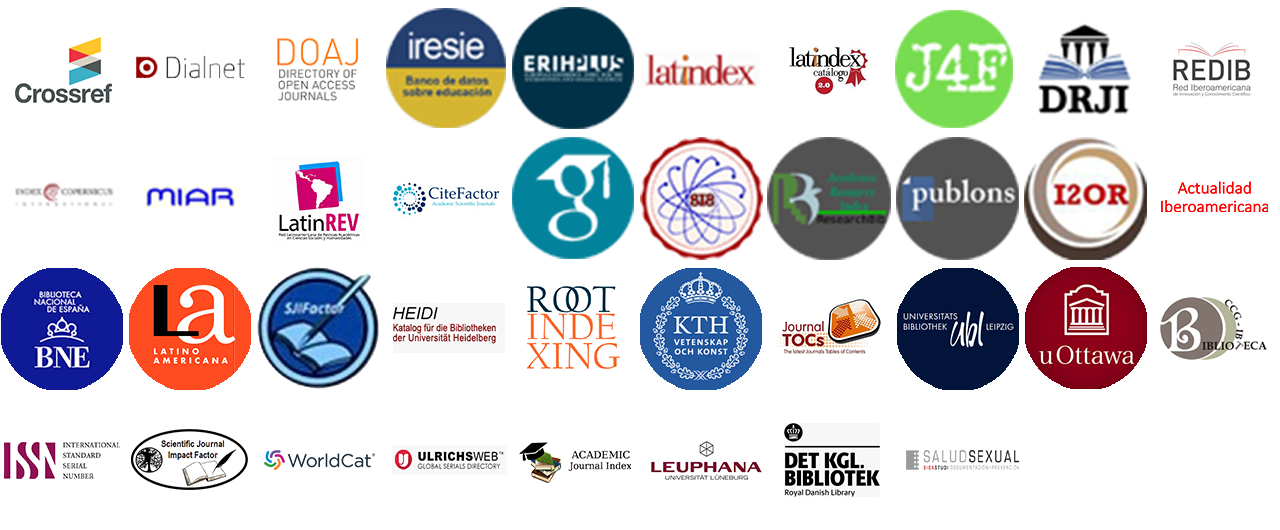Determination of the risk of diabetes in Mexico through a simulated annealing optimized fuzzy system
DOI:
https://doi.org/10.36825/RITI.10.20.011Keywords:
Risk Prediction, Diabetes, Fuzzy Logic, Simulated Annealing, OptimizationAbstract
According to the World Health Organization, approximately 70% of adults in Mexico are overweight or obese, determining factors in the development of diabetes mellitus type 2. In addition, according to the National Institute of Public Health, 10.3% of those over 20 years old suffer from diabetes. To facilitate decision or classification tasks when treating a patient, experts develop systems based on fuzzy logic, however, this design is not usually infallible, so it is common to optimize them to improve their performance. The present work shows the results of a comparison between the efficiency in predicting the risk of suffering from type 2 diabetes established by the FINDRISC test and an own design fuzzy system optimized by the Simulated Annealing heuristic for 295 patients from Acapulco, Mexico. The comparison shows that the fuzzy system obtains the same sensitivity, but higher specificity values and positive and negative predictive values with general improvement in the confidence intervals, concluding that using the proposed system as an aid in the prevention of type 2 diabetes is viable and yields results attached to the reality of the patients.
References
Organización Mundial de la Salud. (2016). Informe Mundial Sobre la Diabetes. Recuperado de:
http://apps.who.int/iris/bitstream/handle/10665/254649/9789243565255-spa.pdf
Instituto Nacional de Salud Pública. (2018). Encuesta Nacional de Salud y Nutrición. Recuperado de:
Mendiola Pastrana, I. R., Urbina Aranda, I. I., Muñoz Simón, A. E., Juanico Morales, G., López Ortiz, G. (2017). Evaluación del desempeño del Finnish Diabetes Risk Score (FINDRSIC) como prueba de tamizaje para diabetes mellitus tipo 2. Atención Familiar, 25 (1), 22-26. doi: http://dx.doi.org/10.22201/facmed.14058871p.2018.1.62925
Reddy Gadekallu, T., Khare, N. (2017). Cuckoo Search Optimized Reduction and Fuzzy Logic Classifier for Heart Disease and Diabetes Prediction. International Journal of Fuzzy System Applications (IJFSA), 6 (2), 25-42. doi: http://dx.doi.org/10.4018/IJFSA.2017040102
Sahu, N., Verma, T., Reddy, G. T. (2017). Diabetes classification using fuzzy logic and adaptive cuckoo search optimization techniques. International Journal on Future Revolution in Computer Science & Communication Engineering (IJFRCSCE), 3 (9), 252-255. Recuperado de: http://www.ijfrcsce.org/index.php/ijfrcsce/article/view/253/253
Bressan, G. M., Flamia Azevedo, B. C., Molina de Souza, R. (2020). A Fuzzy Approach for Diabetes Mellitus Type 2 Classification. Brazilian Archives of Biology and Technology, 63, 1-11. doi: https://doi.org/10.1590/1678-4324-2020180742
Pradini, R. S., Previana, C. N., Bachtiar, F. A. (2020). Fuzzy Tsukamoto Membership Function Optimization Using PSO to Predict Diabetes Mellitus Risk Level. Trabajo presentado en 5th International Conference on Sustainable Information Engineering and Technology, New York, United States. doi: https://doi.org/10.1145/3427423.3427451
Zadeh, L. A. (1965). Fuzzy Sets. Information and Control, 8 (3), 338-353. doi: https://doi.org/10.1016/S0019-9958(65)90241-X
Roos, T. J. (2010). Fuzzy Logic with Engineering Applications (3rd Ed.). EUA: John Wiley & Sons.
Jain, V., Raheja, S. (2015). Improving the Prediction Rate of Diabetes using Fuzzy Expert System. International Journal of Information Technology and Computer Science (IJITCS), 7 (10), 84-91. doi: https://doi.org/10.5815/ijitcs.2015.10.10
Martí, R. (2021). Procedimientos Metaheurísticos en Optimización Combinatoria. Departamento de Estadística e Investigación Operativa, Facultad de Matemáticas, Universidad de Valencia. Recuperado de https://www.uv.es/rmarti/paper/docs/heur1.pdf
Yang, X. S. (2014). Nature-Inspired Optimization Algorithms (1st Ed.). EUA: Elsevier. doi: https://doi.org/10.1016/C2013-0-01368-0
Lindström, J., Tuomilehto, J. (2003). The diabetes risk score: a practical tool to predict type 2 diabetes risk. Diabetes Care, 26 (3), 725-731. doi: https://doi.org/10.2337/diacare.26.3.725
Instituto Mexicano del Seguro Social. (2018). Diagnóstico y Tratamiento Farmacológico de la Diabetes Mellitus Tipo 2 en el Primer Nivel de Atención. Catálogo Maestro de Guías de Práctica Clínica. Recuperado de:
http://www.imss.gob.mx/sites/all/statics/guiasclinicas/718GER.pdf
Bravo-Grau, S., Cruz, J. P. (2015). Estudios de exactitud diagnóstica: Herramientas para su Interpretación. Revista Chilena de Radiología, 21 (4), 158-164. doi: https://doi.org/10.4067/S0717-93082015000400007
Ochoa Sangrador, C., Orejas, G. (1999). Epidemiología y metodología científica aplicada a la pediatría (IV): Pruebas diagnósticas. Anales Españoles de Pediatría, 50 (3), 301-314. Recuperado de: https://www.aeped.es/anales/50/3/epidemiologia-y-metodologia-cientifica-aplicada-pediatria-iv-pr
Published
How to Cite
Issue
Section
License
Copyright (c) 2022 Revista de Investigación en Tecnologías de la Información

This work is licensed under a Creative Commons Attribution-NonCommercial-NoDerivatives 4.0 International License.
Esta revista proporciona un acceso abierto a su contenido, basado en el principio de que ofrecer al público un acceso libre a las investigaciones ayuda a un mayor intercambio global del conocimiento.
El texto publicado en la Revista de Investigación en Tecnologías de la Información (RITI) se distribuye bajo la licencia Creative Commons (CC BY-NC
 ), que permite a terceros utilizar lo publicado citando a los autores del trabajo y a RITI, pero sin hacer uso del material con propósitos comerciales.
), que permite a terceros utilizar lo publicado citando a los autores del trabajo y a RITI, pero sin hacer uso del material con propósitos comerciales.



